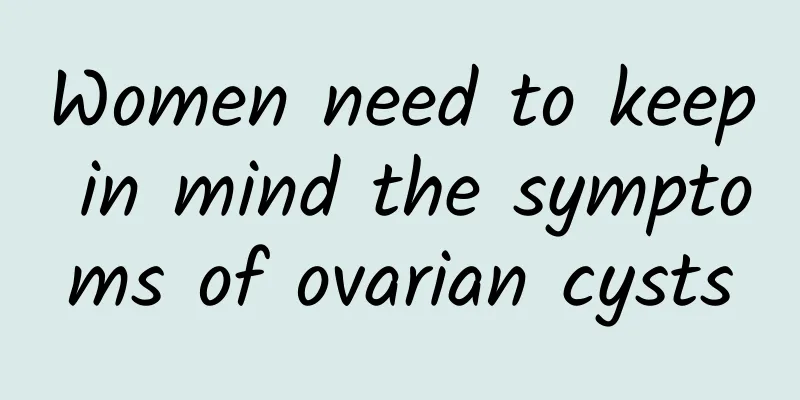What is the relationship between uterine fibroids and cysts? Are there any connections between uterine fibroids and cysts?

|
What is the relationship between uterine fibroids and cysts? Is there a relationship between uterine fibroids and cysts? Health is a very important topic for every woman, and among gynecological diseases, uterine fibroids and cysts are relatively common problems. Many women are very interested in the relationship between the two. Here we will introduce the relevant situation of uterine fibroids and cysts. 1. Factors causing uterine fibroids Uterine fibroids are one of the most common benign tumors in women of childbearing age. Their formation is related to many factors. First of all, genetic factors play an important role in the occurrence of uterine fibroids. If someone in the family suffers from uterine fibroids, the individual's own chance of getting the disease will increase accordingly. In addition, hormone levels are also one of the key factors in the formation of uterine fibroids. Increased estrogen levels can promote the occurrence of uterine fibroids, while progesterone can slow down their growth rate. 2. Causes and classification of cysts Cyst is a disease composed of cystic masses, which is slightly different from the formation factors of uterine fibroids. The formation of cysts is usually caused by ovarian dysfunction, drug interference, endocrine abnormalities, etc. Common cysts include functional cysts, polycystic ovary syndrome, ovarian cysts, etc. The classification of these cysts is mainly determined by their formation causes and characteristics. 3. The relationship between uterine fibroids and cysts Although uterine fibroids and cysts are two different diseases, in some cases, they may be related. First, some studies have found that there is a genetic relationship, and some patients with uterine fibroids may also suffer from ovarian cysts. In addition, changes in hormone levels may also affect both. For example, hormone imbalance may lead to the occurrence of uterine fibroids and ovarian cysts. However, it should be emphasized that uterine fibroids and cysts are not necessarily related, and each woman's condition is different, and the specific situation needs to be confirmed in combination with individual circumstances. Conclusion: Uterine fibroids and cysts are common gynecological diseases, but their occurrence is related to different factors. The formation of uterine fibroids is closely related to genetics and hormone levels, while the formation of cysts is related to ovarian dysfunction and endocrine abnormalities. Although there may be a certain correlation between the two, it is not necessarily the case. Therefore, in daily life, female friends should monitor their own physical changes, seek medical treatment in time, and receive treatment according to the doctor's advice. This can better protect their health and improve their quality of life. |
<<: What should be paid attention to for small uterine fibroids?
>>: What are the treatment guidelines for uterine fibroids?
Recommend
The best time to treat threatened abortion
Due to environmental factors or trauma, more and ...
Can I stop taking medication for endometrial tuberculosis?
I started having dysmenorrhea after marriage. I d...
What should I do if my period has not come for 43 days?
What should I do if my period hasn’t come for 43 ...
Experts tell you how to stay away from cervical erosion
As women's status improves, more and more peo...
Key ways to prevent ectopic pregnancy in life
The prevention of ectopic pregnancy is the key to...
What causes less menstrual flow and dark color?
Small amount of dark menstrual flow may be caused...
What are the causes of female vulvar leukoplakia
What are the causes of vulvar leukoplakia? Vulvar...
No more breast lumps after menopause
The disappearance of breast lumps after menopause...
Are uterine and ovarian cysts serious? What are the dangers?
The severity of ovarian and uterine cysts depends...
What causes ectopic pregnancy?
Ectopic pregnancy is usually called ectopic pregn...
How to tell if you are in perimenopause
Generally speaking, you can tell that you are in ...
Contraindications and indications for curettage of artificial abortion
Artificial abortion refers to the termination of ...
The cost of treating cervical erosion
Cost of treating cervical erosion: 1. Cervical er...
Can I check the six hormones if I have amenorrhea?
During amenorrhea, six hormone tests can be perfo...
3 simple exercises to restore your slim waist
Waist circumference is one of the important parts...









